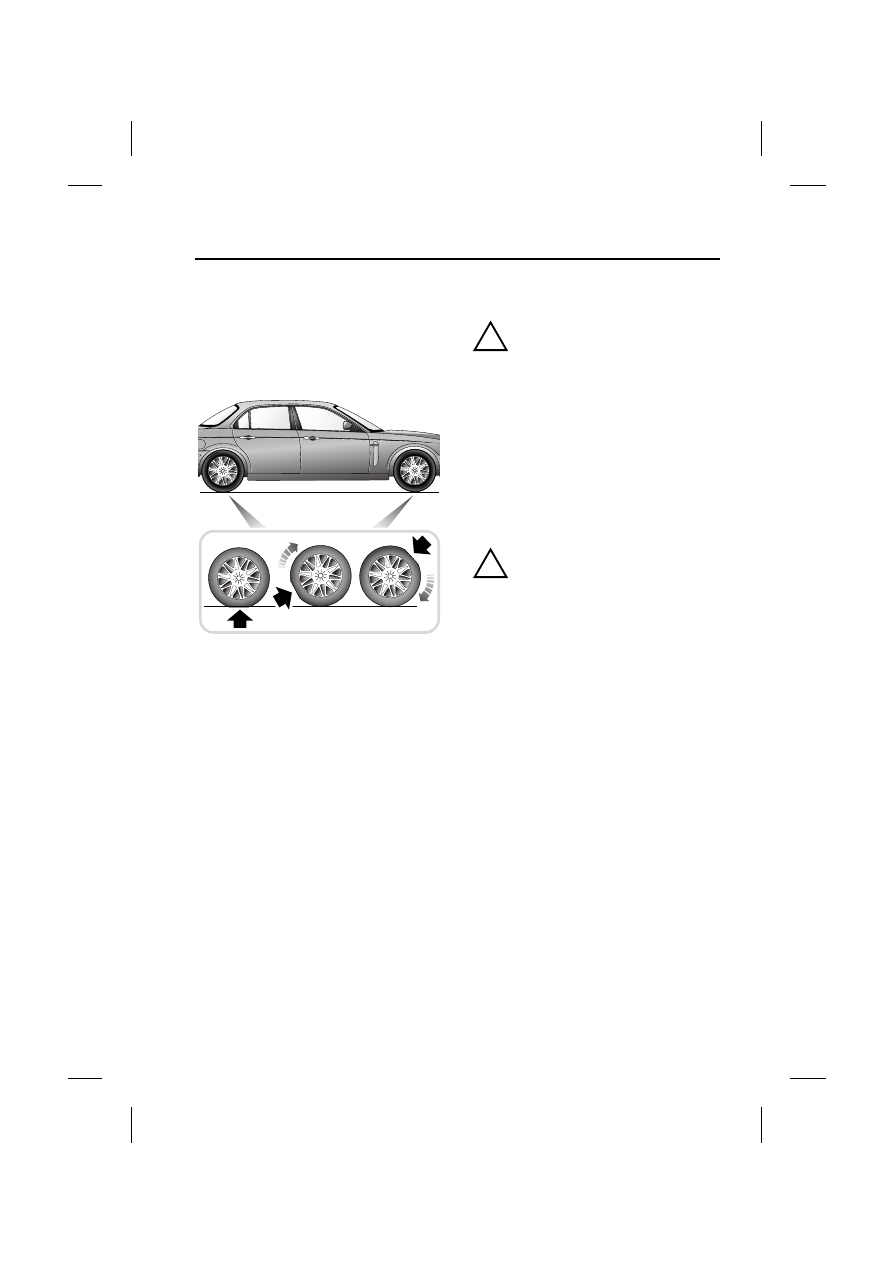Jaguar XJ (2008 year). Manual - part 63

253
Wheels and Tires
R
Tire pressures during long term vehicle
storage
To minimise the possibility and effects of
flat spots during storage, the tires may be
inflated to the maximum pressure
indicated on the tire wall.
Note: Before using the stored vehicle on
the road again, ensure that correct tire
pressures are restored.
TIRE PRESSURE MONITORING
SYSTEM (TPMS)
!
WARNING:
The Tire Pressure Monitoring System
(TPMS) is NOT a substitute for
manually checking tire pressures. Tire
pressures, including the spare wheel,
should be checked regularly, when
cold, using an accurate pressure
gauge and inflated to the correct
pressure. Failure to properly maintain
your pressures could increase the risk
of tire failure, with consequential loss
of vehicle control and personal injury.
!
WARNING:
The TPMS cannot register damage to a
tire. Regularly check the condition of
your tires.
Note:
1. Non-approved accessories may
interfere with the system. If this
occurs, TIRE PRESSURE SYSTEM
FAULT is displayed in the message
centre.
2. Certain tires may affect the
performance of the TPMS. Always
replace tires in accordance with
recommendations, see page 249.
JAG0653